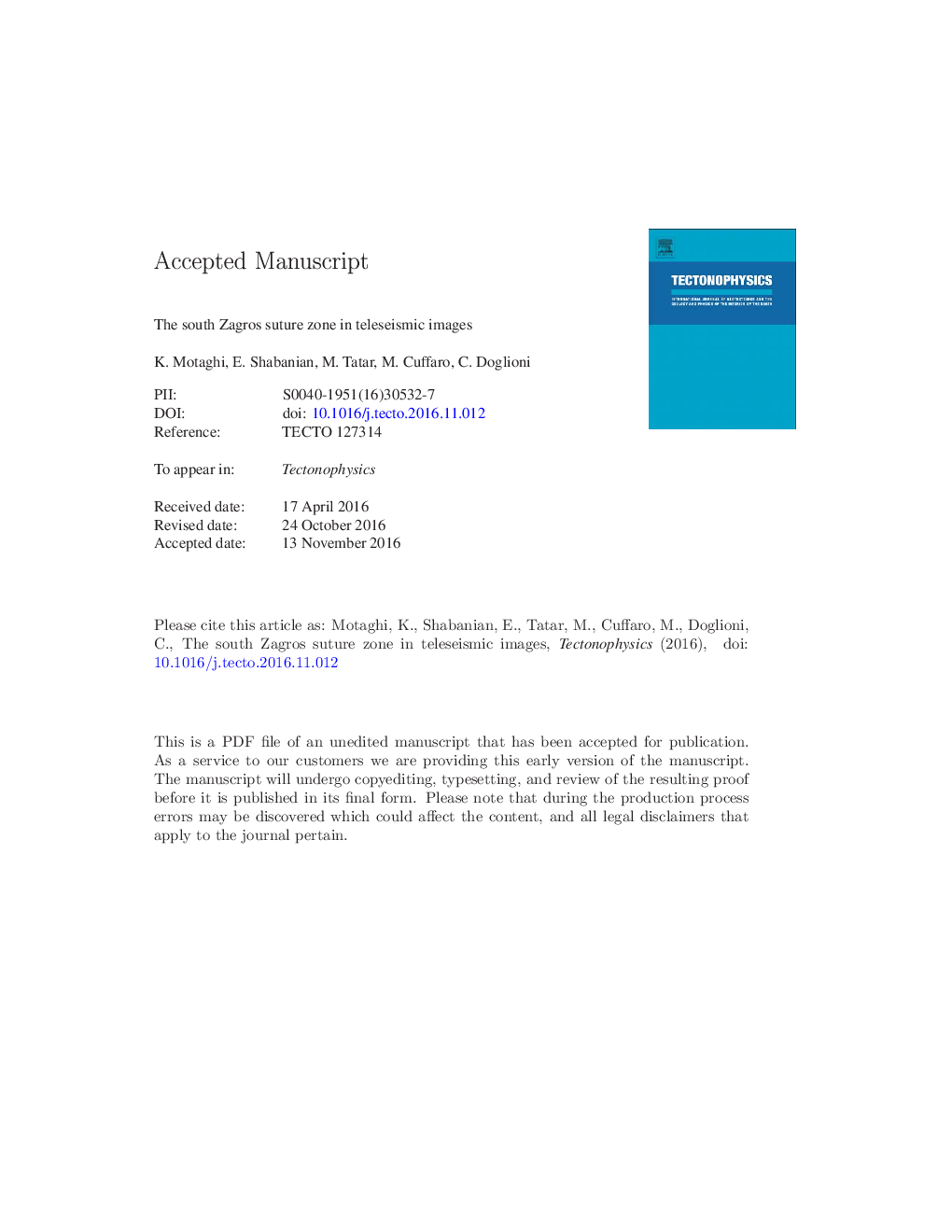| Article ID | Journal | Published Year | Pages | File Type |
|---|---|---|---|---|
| 5781716 | Tectonophysics | 2017 | 30 Pages |
Abstract
The geometry of intra-continental lithosphere boundaries along the Zagros orogenic belt in the Arabia-Eurasia collision is investigated by means of teleseismic data. The data are gathered over a seismic linear profile extending across south Zagros, the Sanandaj-Sirjan metamorphic zone, the Urumieh-Dokhtar magmatic arc, Central Iran, and the Kopeh Dagh - Binalud mountains. We exploit the P and S receiver functions leading to map the geometry of the crustal and subcrustal interfaces. The migrated depth sections reveal an abrupt crustal thickening and a gentle crustal thinning ~Â 60Â km north and ~Â 30Â km south of the Zagros suture, respectively. Associated to the buckled antiformal Moho south of the suture, a deeper synform in the lithospheric lid of the lower Arabia plate is shown by migrated depth sections affecting the lithospheric mantle of the Arabia plate beneath the suture zone. This geometry implies an unexpected intra-lid decoupling. These features imply that the Central Iran lithosphere acts as a relatively strong backstop producing significant internal deformation expressed by shortening and thickening at the edge of the Arabian lithosphere. The 410Â km and 660Â km transition zones are imaged by P to S converted phases and showed lateral continuity implying an originally low dip angle subduction of the oceanic Arabian plate beneath Central Iran.
Keywords
Related Topics
Physical Sciences and Engineering
Earth and Planetary Sciences
Earth-Surface Processes
Authors
K. Motaghi, E. Shabanian, M. Tatar, M. Cuffaro, C. Doglioni,
